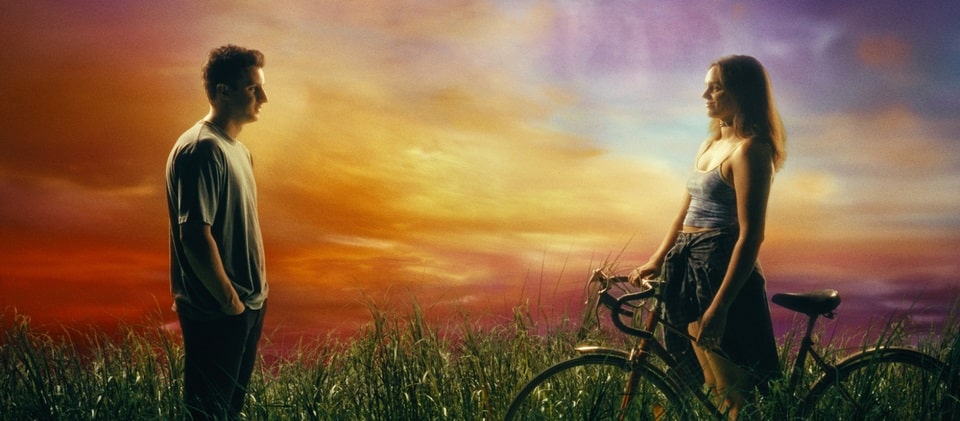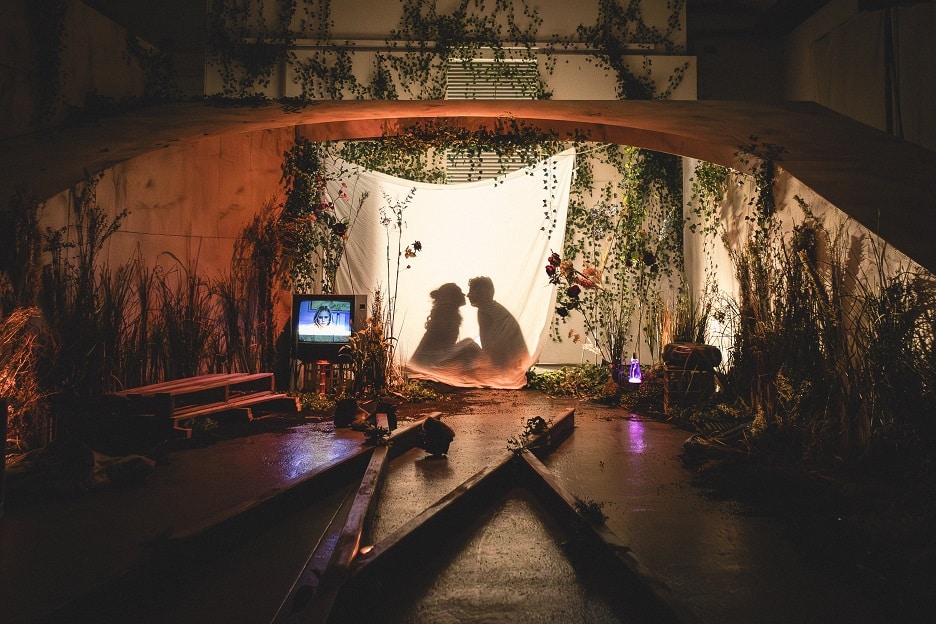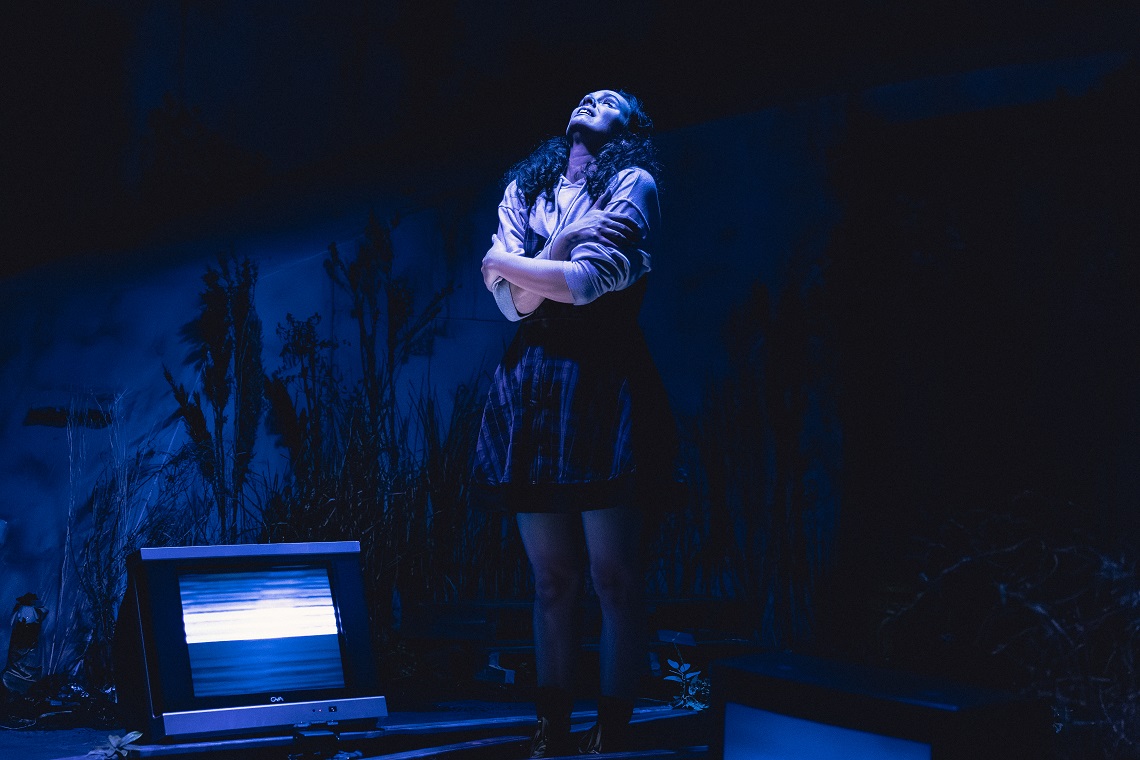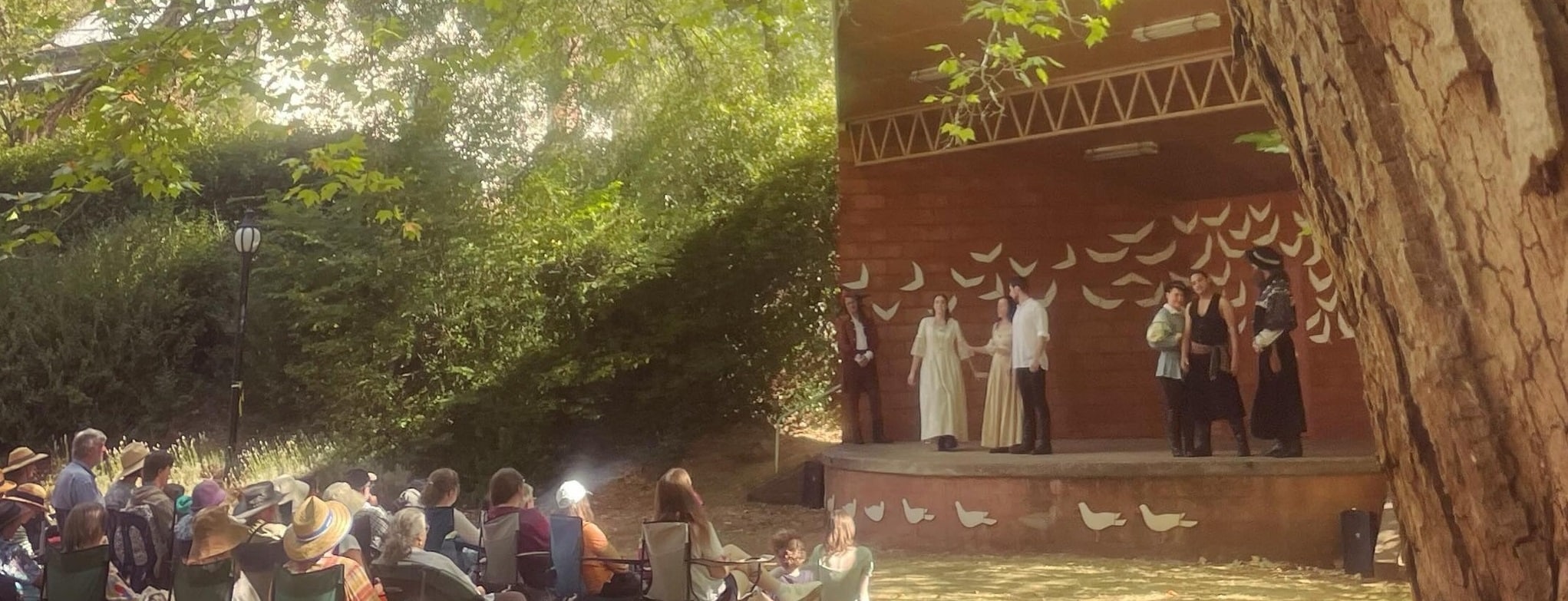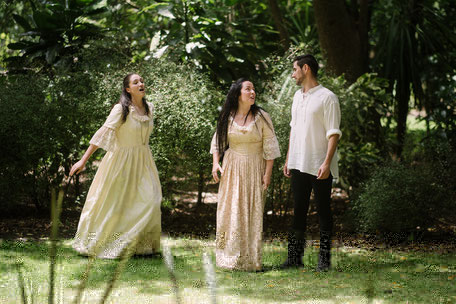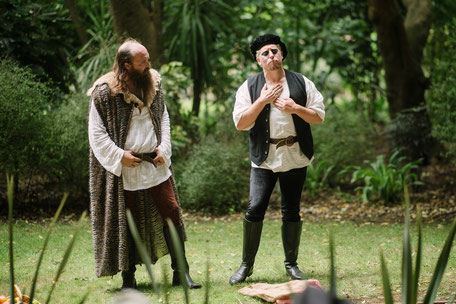Red Stitch Actors’ Theatre’s Romeo & Julie is a captivating and raw modern tale of young love. Loosely inspired by the star-crossed lovers of William Shakespeare’s Romeo and Juliet, the audience is transported to Wales with a contained cast of 5.
The naturalistic dialogue and pared-back set plants the audience firmly in the present day – this is a twist on the classic play with a gritty reality that underpins each scene. Damon Baudin’s Romy and Shontane Farmer’s Julie have an undeniable chemistry (“If I was flirting with you, you wouldn’t know”), their budding romance constantly interrupted by the forces that surround them – a baby, an alcoholic mother (an impactful and comedic performance by Belinda McClory as Barb), and a looming spot at Cambridge.
This creates an immediate dramatic tension, as the audience is aware that Romy and Julie are on borrowed time. Despite the chaotic lives of the characters, moments of humour and lightness throughout add reprieve, as writer Gary Owen succeeds in nailing both the language of modern-day teenagers and the complexities of family dynamics.
The set design and lighting expertly convey the claustrophobia that Romy, and later Julie, experience – the walls of set literally begin slowly closing in. The space is cleverly used by rearranging the minimal furniture between scenes, allowing the audience to pause and absorb the high emotions. The effective visual of a beach contained in a small window symbolises both hope and entrapment, yet even in these outdoor scenes, Romy is still constrained by the bulky prop of Neve’s pram.
Back inside, the colourful baby lights reflecting around the room is a beautiful visual choice – yet it serves to capture the ever-present nature of Romy’s baby and responsibility, Neve, the thing that both brought Romy and Julie together, and might just tear them apart.
A central theme throughout the play is that love is an active choice – when presented with a choice, Romy chooses to raise baby Neve, just as Claudia Greenstone’s Kath cherishes her stepdaughter Julie, posing to her “isn’t it worse to not be in charge of your life?”, questioning the themes of fate that dictated the lives of Shakespeare’s original characters. Another fresh element of the play is the agency that Julie exhibits.
In contrast to many portrayals of the famous character, she is smart (which is contrasted with an illiterate Romy), sassy and ambitious, and Farmer excels at capturing the angst and pining of a teenage girl experiencing her first love against all common sense. In an ode to the conflict of the original play, Justin Hosking’s Col wears a royal blue coloured outfit in a nod to the Capulets as he confronts Romy, who wears the Montague’s signature red – the same red jacket that is worn by Julie as she navigates the falling out with her parents.
The play both begins and ends with Dire Straits’ classic song “Romeo and Juliet,” as impactful speeches and painful decisions leave the audience pondering the timelessness of young love and the pressures of familial expectations.
Photographer: Jodie Hutchinson
This review also appears on It’s On The House. Check out more reviews at Whats The Show to see what else is on in your town.
